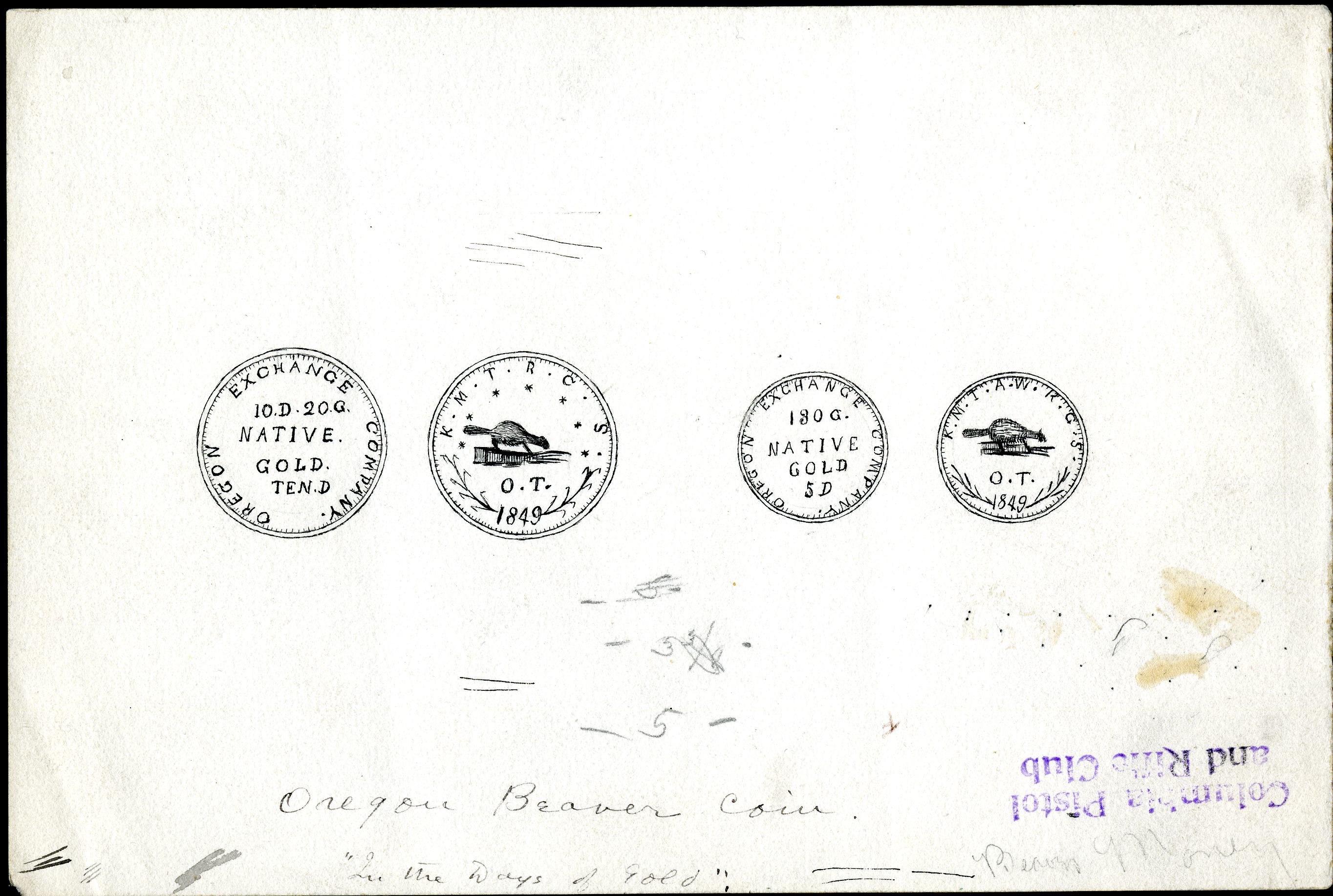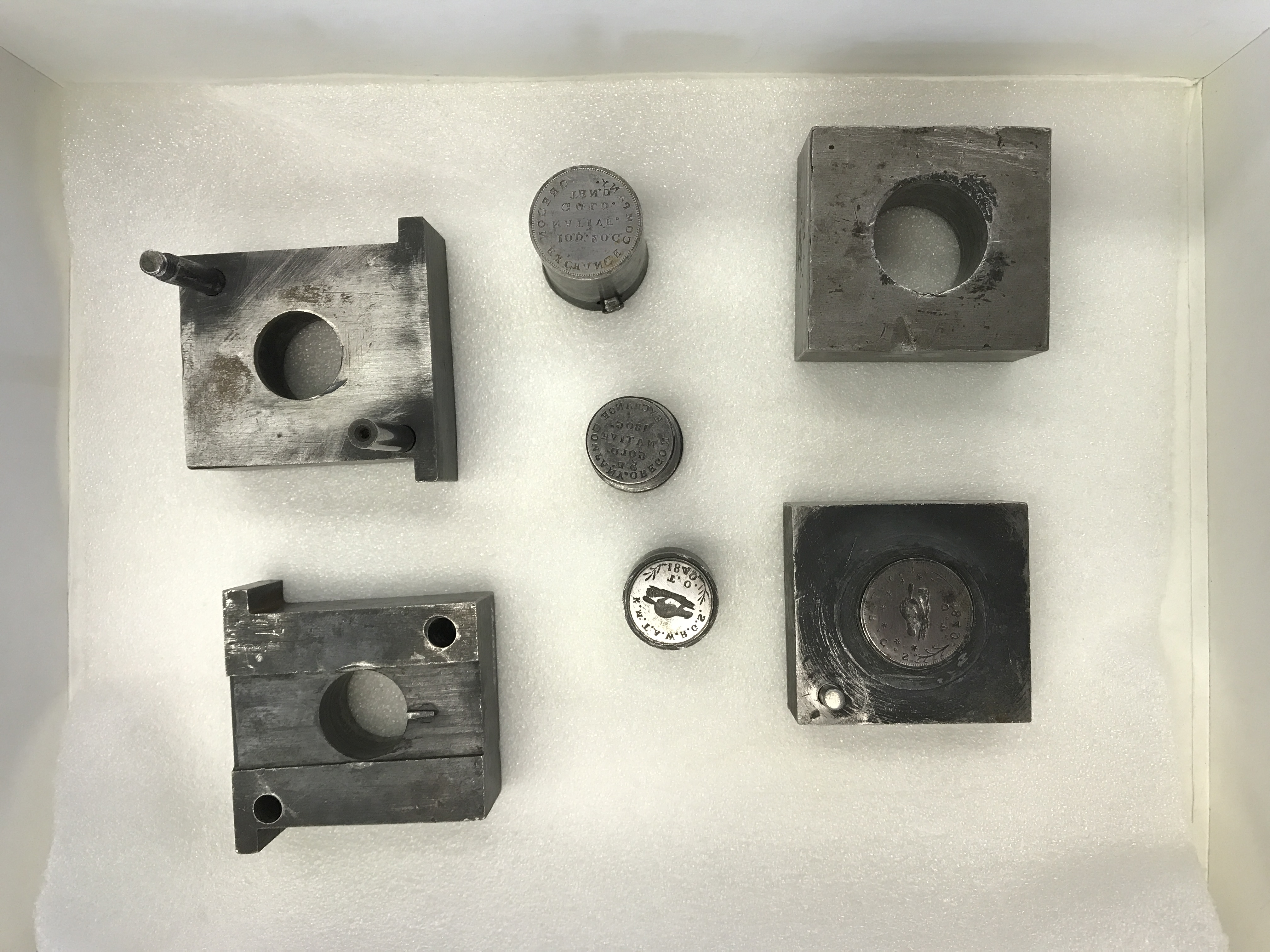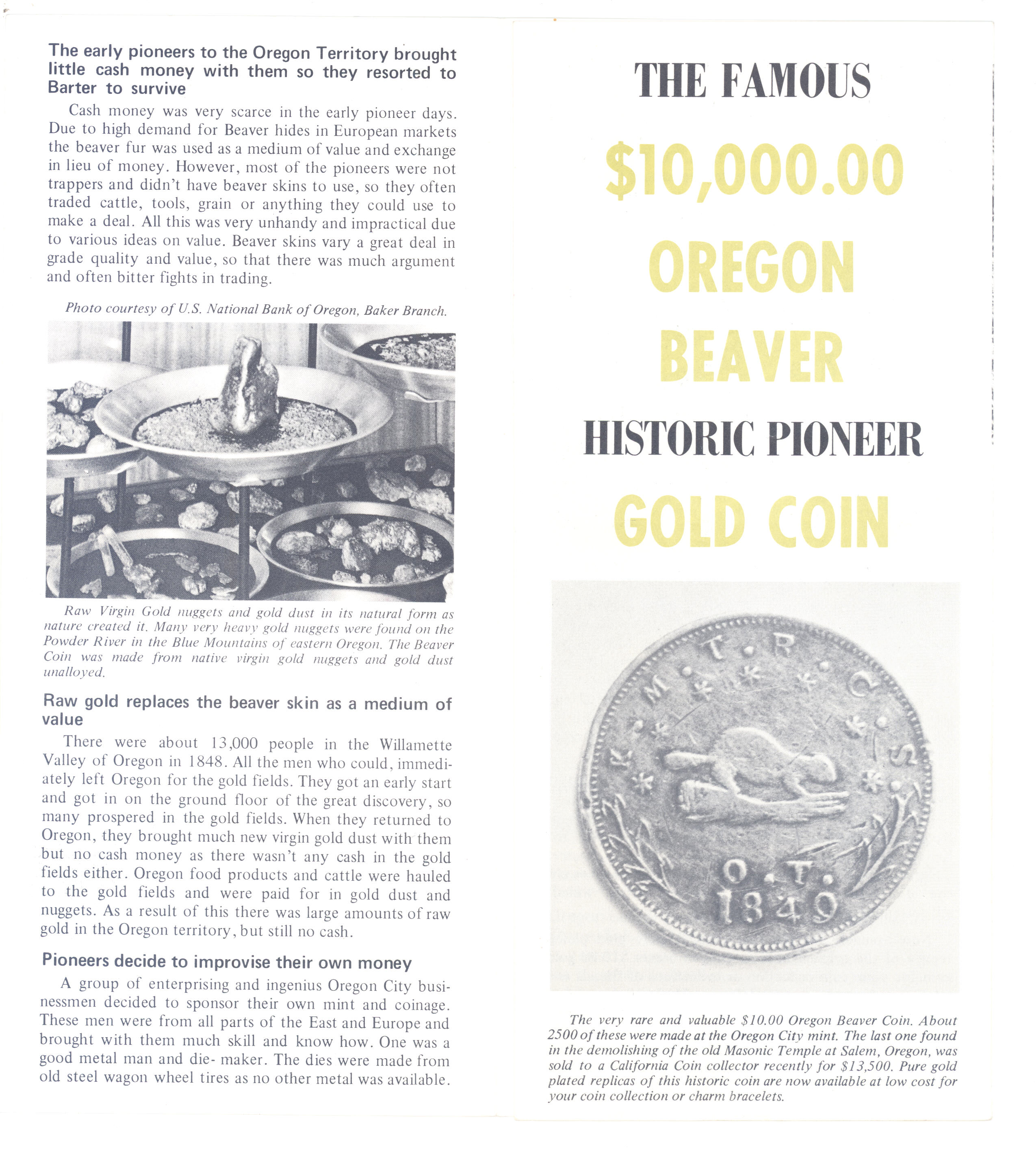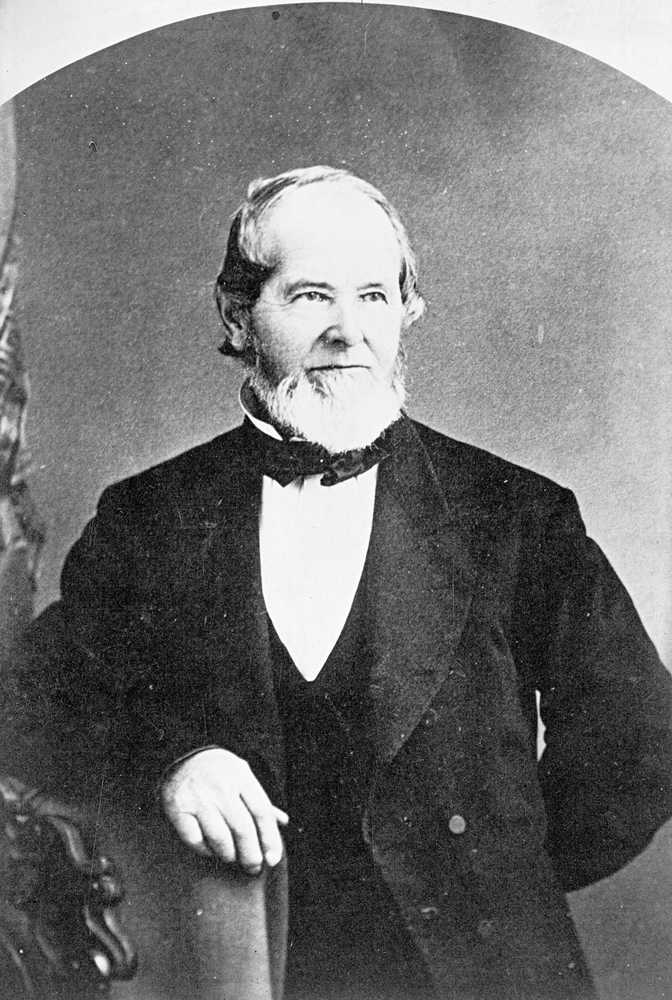Beaver gold coins, in five-dollar and ten-dollar denominations, were created in 1849 to fill a commercial need in the new Oregon Territory, where currency consisted of “beaver skins, wheat, bills, drafts and orders, gold dust and silver coins of Mexico and Peru, all of changing and uncertain value.” Goods such as skins and wheat had the added disadvantages of being difficult to transport and subject to damage. At a critical moment, the Beaver coins helped Oregon merchants improve financial transactions both locally and with the territory’s vital trade connection, California.
With the discovery of gold in California in 1848, many Oregon settlers rushed south. A number found success in the mines and returned with gold dust, but gold dust was an awkward trade medium, easily subject to fraud and contamination. Oregon’s provisional government considered the situation to be critical, but federal law did not allow local coinage. Nevertheless, on February 16, 1849, the provisional legislature approved a bill establishing an office in Oregon City for the weighing, assaying, and stamping of gold—in essence, a mint. The arrival on March 2 of Joseph Lane as the new federally-appointed governor of the Oregon Territory put a stop to the project.
Shortly thereafter, eight Oregon City businessmen formed the Oregon Exchange Company, a private enterprise to carry on plans to create a local currency. Among the group were merchant and former provisional governor George Abernethy and mayor and former provisional treasurer William K. Kilborne. Their effort was buoyed by the existence of more than a dozen similar enterprises in California, the most important of which was the coinage of Moffat & Co., of San Francisco.
With difficulty, the Oregon Exchange Company devised a rolling mill from scrap iron, and the necessary dies and stamps were created to make coins. The company had to improvise a rolling mill from discarded wagon tires and other scrap iron. Former Methodist mission worker Hamilton Campbell engraved the dies for the coins.
The design of the coins features a beaver, the company name, and the initials of its members. Before the Oregon Exchange Company ceased operating in September, it minted California gold into approximately 6,000 five-dollar coins and 2,850 ten-dollar coins. The company’s coins of solid gold were quickly recognized as trustworthy currency.
With the opening of the federal mint in San Francisco in 1854, the government required that all private coinage be turned in and melted down. Some coins escaped that fate, and about fifty Beaver coins are thought to exist. The dies for the two coins, along with one of the ten-dollar pieces, are at the Oregon Historical Society.
Beaver money rarely appears in the numismatic marketplace. A five-dollar coin sold in 2006 for $125,000; another was sold for more than $257,000 in 2015.
-
![]()
Imprints of Beaver coins.
Courtesy Oreg. Hist. Soc. Research Library, Mss. 118
-
One of the original Beaver Coin dies, held in the OHS Archives.
Courtesy Oregon Hist. Soc. Museum
-
![]()
A brochure advertising Beaver coins.
Courtesy Oreg. Hist. Soc. Research Library
Related Entries
-
![George Abernethy (1807-1877)]()
George Abernethy (1807-1877)
George Abernethy cut a wide swath through Oregon's religious, economic,…
-
![Joseph Lane (1801-1881)]()
Joseph Lane (1801-1881)
Joseph Lane was the first governor of Oregon Territory. A leading Democ…
Related Historical Records
Map This on the Oregon History WayFinder
The Oregon History Wayfinder is an interactive map that identifies significant places, people, and events in Oregon history.
Further Reading
Scott, Leslie M. "Pioneer Gold Money, 1849." Oregon Historical Quarterly 33.1 (March 1932): 25-30.
Strevey, T. Elmer. "The Oregon Mint." Washington Historical Quarterly 14.4 (October 1924): 276-284.
Beaver Coins collection, Mss118. Oregon Historical Society Research Library, Portland.





